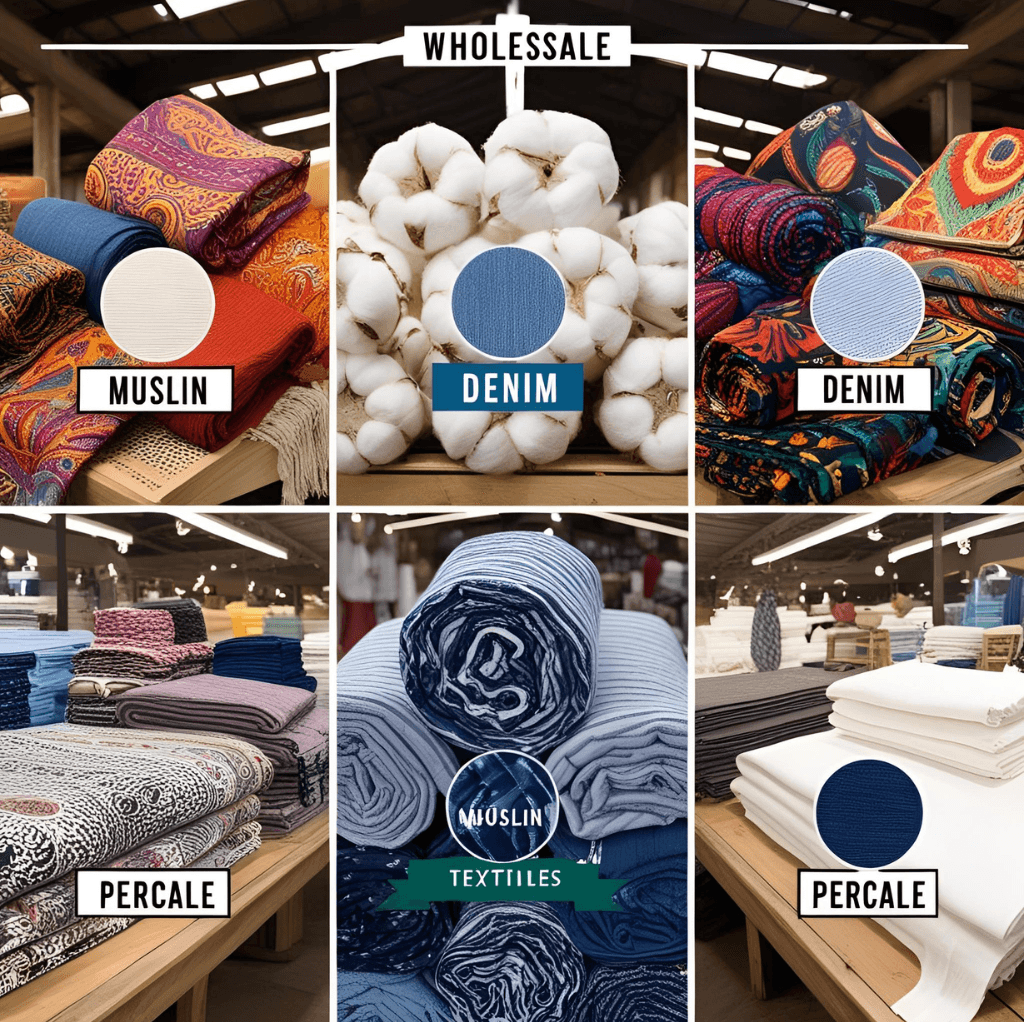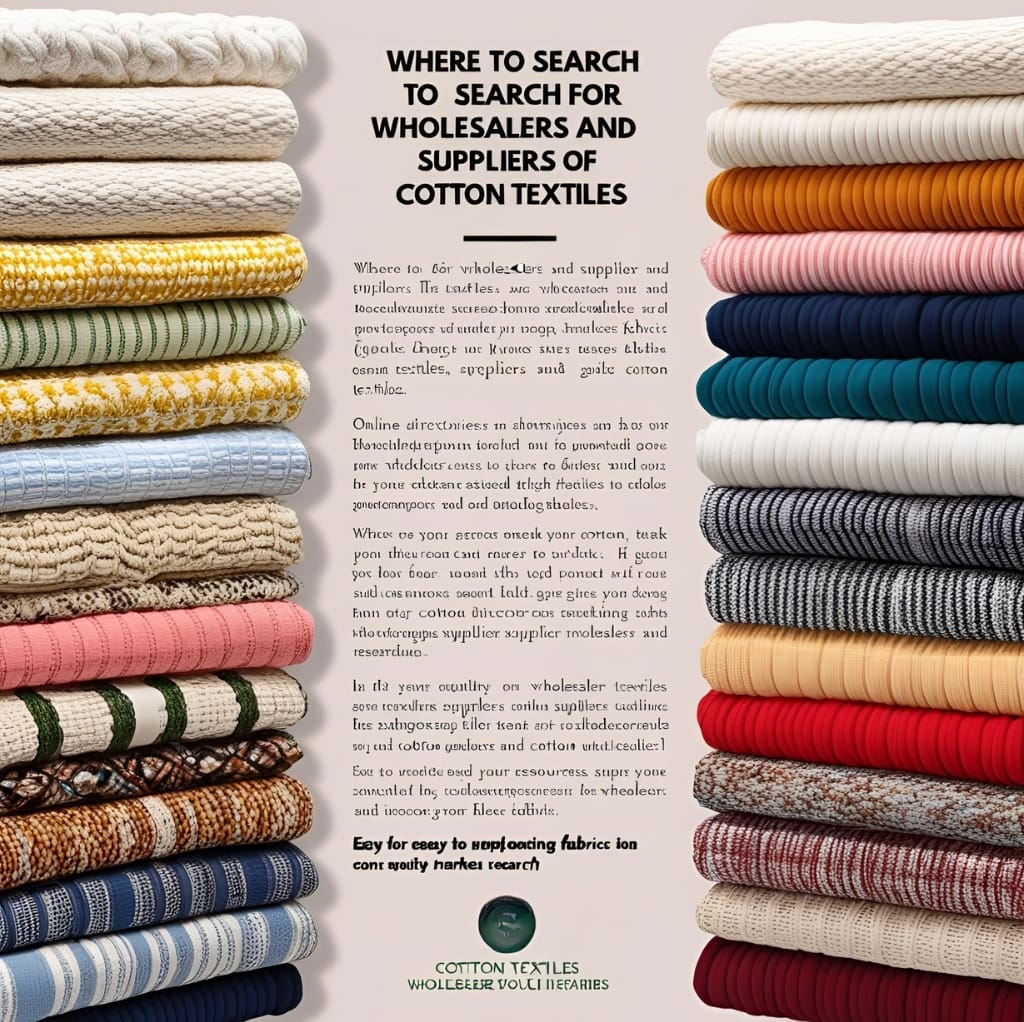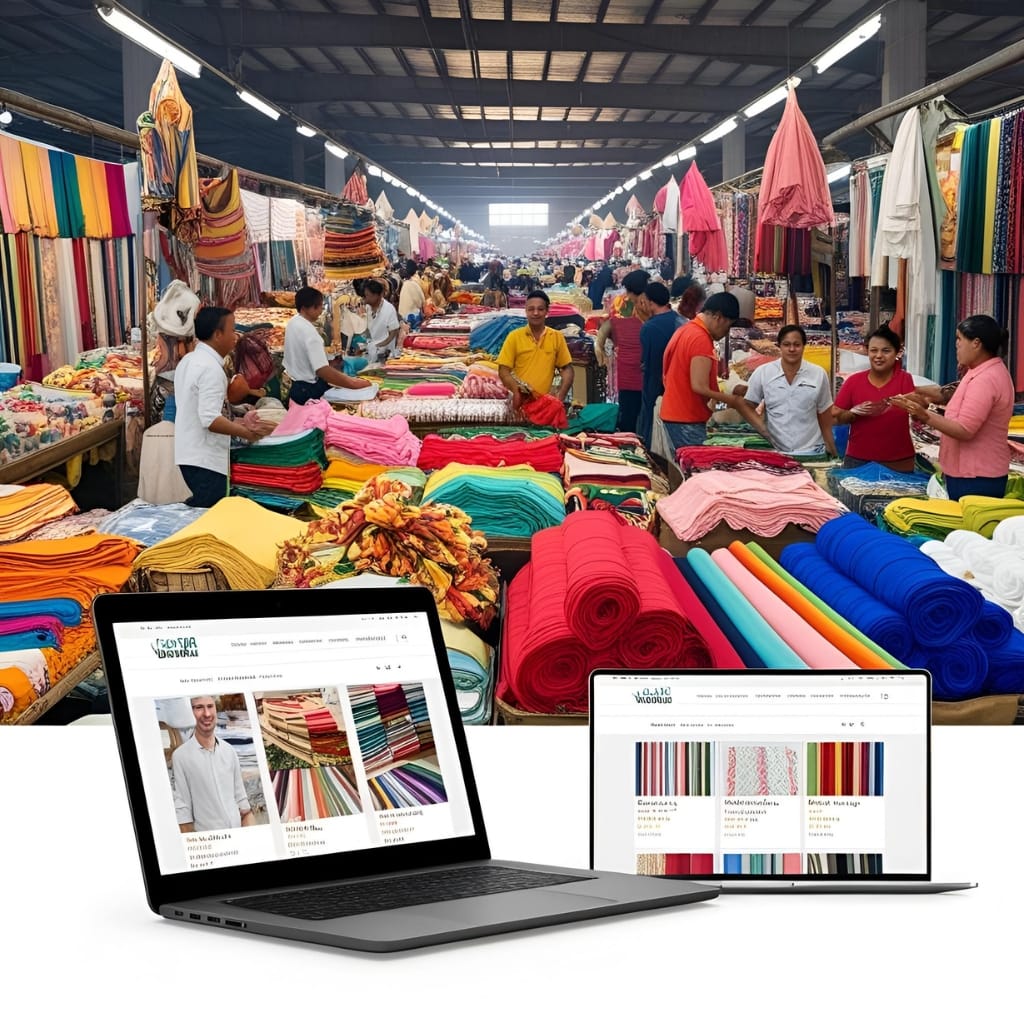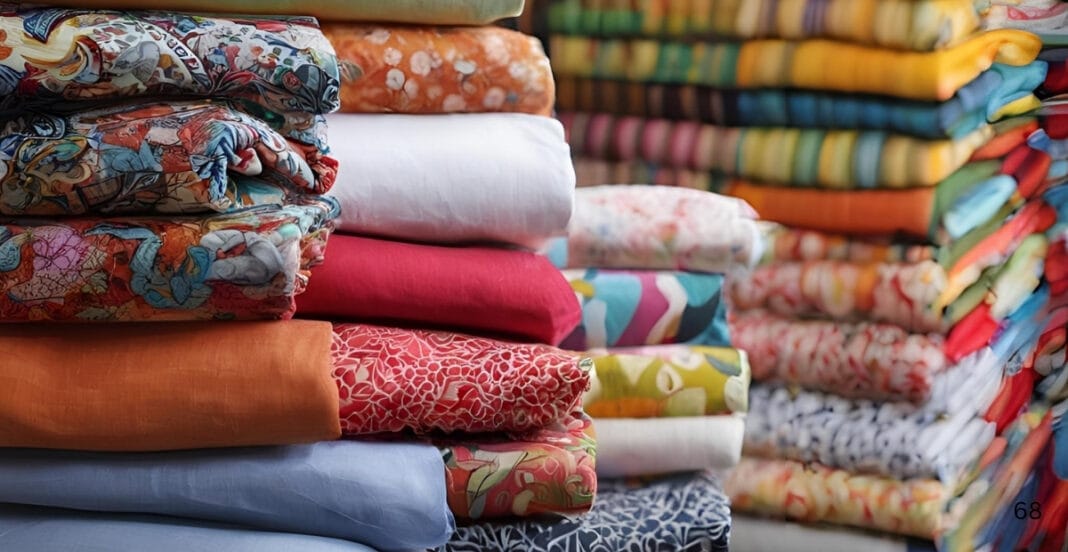The wholesale of cotton textiles is a new branch in the world’s fabric industry.
Designers and manufacturers are increasingly taking advantage of bulk cotton textiles for clothes, decor, and crafts. Whether you’re a newcomer or a veteran buyer, stepping into the world of cotton wholesale can offer incredible chances.
The fabric industry loves cotton due to its breathability, versatility, and durability. Although synthetics are most often preferred by buyers, this gives wholesale cotton an advantage. Therefore, bulk cotton is a smart investment for businesses.
Table of contents
- Reasons for The Demand of Cotton Textiles
- Available Types of Cotton Textiles in Wholesale
- Advantages of Buying Cotton Textiles in Bulk
- Where to Search For Wholesalers And Suppliers of Cotton Textiles
- Wholesale Cotton Markets: Online vs. Offline
- Understanding Cotton Grades and Quality
- Top Countries Leading in Cotton Textiles Wholesale
- Wholesale Cotton Textiles Pricing Systems
- How to Get Better Deals From Cotton Wholesalers
- Cotton Wholesale Trade Shipping and Packaging
- Guidelines for Importing and Exporting Cotton Fabrics
- Cotton Certifications: Key Notes
- Coton Textile Business Promotion Stratigies
- Sourcing Cotton Textiles for Fashion Design
- Avoiding Common Mistakes in Cotton Wholesale
- Managing Inventory for Cotton Textile Business
- Branding Your Your Cotton Textile Store
- Tech Tools for Cotton Textile Wholesalers
- Case Studies Of Successful Cotton Textile Traders Beyond Borders
- Future Trends in Cotton Textile Wholesale
- Conclusion
- FAQs
Reasons for The Demand of Cotton Textiles
Cotton is one of the oldest fabrics known to humans, but it remains the first fabric choice for clothes and home textiles. People now prefer natural over synthetic, making its biodegradability a plus for eco-friendly consumers. Moreover, its temperature regulating properties make cotton textiles a favorite throughout the year.
Available Types of Cotton Textiles in Wholesale

In fact, cotton can be purchased in different forms, each fulfilling a specific need. Consequently, knowing the types of fabrics is vital for buying in bulk.
- Muslin: Soft and light, preferred for baby clothes or linings.
- Twill: Great for trousers or workwear due to its strength.
- Denim: Sturdy and used for jeans and jackets.
- Poplin: Featured in uniforms and shirts for its smooth and crisp properties.
- Canvas: Resilient, used for outdoor items and bags.
- Voile: Lightweight fabric made from silk or cotton, typically utilized in scarves and curtain.
Understanding the various types of fabric is crucial for ordering the correct cotton textiles wholesale fabrics for your projects or resale purposes.
Advantages of Buying Cotton Textiles in Bulk
Overall, purchasing in bulk means saving time and money. It helps you cut down on shipping expenses, receive greater deals, and avoid stockouts.
- Savings: Suppliers provide discounts for large orders.
- Always Available: Fabrics are available at all times.
- Business Scope: Quick turnaround time is made possible with bulk inventory.
In summary, bulk buying helps to improve profit margins while smoothing the operations of the business.
Where to Search For Wholesalers And Suppliers of Cotton Textiles

Finding the right supplier is crucial. Purchase reviews, order test samples, and check certifications. Suppliers are reliable if they:
- Actively answer questions
- Provide clear pricing
- Guarantees the quality of the products
- Communicate clearly on shipping time and policies
They can be found at trade shows, online directories, or through referrals. Trust is essential for cotton textiles wholesale.
Wholesale Cotton Markets: Online vs. Offline

The process of buying fabrics has been made extremely easy with online platforms. Global buyers and suppliers are connected through websites such as Alibaba, IndiaMart, and Tradekey.
- Pros of Online: Speedy quotes, easy comparison, much larger selection.
- Pros of Offline: Build relationships with clientele and accessibility to touch the fabric.
For new buyers, starting online is a better use of funds. However, long-lasting partnerships are fostered offline.
Understanding Cotton Grades and Quality
Quality is essential as low quality cotton can lead to returns from customers. Here is a list of things to check:
- Staple length: Softer and stronger fibers tend to be longer.
- Thread count: The tighter the weave, the higher the thread count.
- Weight: Fabrics suited for winter wear are heavier while summer wears are lighter.
- Colorfastness: Check if the dyes bleed.
Never, ever place bulk orders before getting samples.
Top Countries Leading in Cotton Textiles Wholesale
When it comes to the cotton textile wholesale market, the leaders include:
- India: Offers vast options at low prices and is the largest producer.
- China: Recognized for quality as well as quantity.
- U.S.: Known for offering high-quality, organically certified cotton.
- Turkey and Pakistan: Midrange buyers looking for affordability and quality.
Countries from which you source affect cost, shipping, and quality.
Wholesale Cotton Textiles Pricing Systems
Grabing how pricing systems function is very important. Here are some relevant terms:
- MOQ (Minimum Order Quantity): The least quantity you can purchase
- FOB (Free on Board): Cost is paid to load the goods on a vessel at the selected port shipping is included upto the port
- CIF (Cost, Insurance, Freight): Total cost to your country.
Prices differ according to quality, weave, finish, and order volume. Always check before purchasing.
How to Get Better Deals From Cotton Wholesalers
Negotiation doesn’t just belong to larger companies. Minor buyers can negotiate too. Like the following:
- Request discounts for big purchase orders
- Settle payment terms
- Combine other zip fabrics for discounts
- Foster enduring associations for rates based on loyalty
Treat all negotiations respecting both parties involved.
Cotton Wholesale Trade Shipping and Packaging
Shipping is one area that will make your business succeed or fail. Discuss these with your supplier:
- Should they ship fabric rolls or folded bundles?
- Should they ship shrink wrapped or open packed?
- Should they use sea or air shipping?
A properly packaged shipment minimizes sorts of surprises after arriving at the intended destination.
Guidelines for Importing and Exporting Cotton Fabrics
Every nation has distinct guidelines. These include:
- Packing List
- Bill of Lading or Airway Bill
- Commercial Invoice
- Certificate of Origin
Things can get complicated, lets simplify. A freight forwarder streamlines the process, as they manage the paperwork, transportation, and clearances.
Cotton Certifications: Key Notes
Buyers gravitate towards certified materials. Make sure to verify:
- OEKO-TEX® Certification
- GOTS – Global Organic Textile Standard
- Better Cotton Initiative (BCI)
Such labels guarantee that the cloth is produced in an environmentally friendly way. This strengthens buyer trust and increases pricing.
Coton Textile Business Promotion Stratigies
Make known your services and post visibility. Promote:
- B2B eCommerce platforms
- Social media for visual promotion
- Email Campaigns
- Product catalogs
Regular updates with clear descriptions, great professional looking photos, will garnered increased traffic and website conversions.
Sourcing Cotton Textiles for Fashion Design
Cotton is one of the most used materials in the fashion world. It is both comfortable and stylish, a combination that is many brands prefer. Apart from wholesalers, who provide:
- E-commerce apparel startups
- Large garment factories
- Tailors and boutiques
Having cotton weaves in a variety of colors will appeal to designers and is a great way to attract.
Opportunities In Home Decoration And Upholstering Textiles
Another key buyer are home textiles. Cotton is suitable for:
- Curtains
- Cushions
- Table Covers
- Bed Linens
Designers require reliable suppliers of wholesale cotton textiles. Provide samples, color cards, and patterns to win them.
Cotton Textiles For The Crafts And Do It Yourself Market
Cotton is liked by hobbyists and crafters. It’s utilized for:
- Quilting
- Applique
- Decorative fabric and tote bags
Bundles, scraps, or fat quarters sells fast online through Etsy, Shopify, or Instagram shops.
Trends In Sustainable Cotton And Organic Textiles
Green is gold now. Buyers look for:
- Cotton fabric certified organic
- Fabrics that are fair trade
- Dyes that are non-toxic
Using eco-friendly cotton contributes to building brand trust. Sustainable stories and labels can be added and shared.
Cotton For Institutional And School Use Textiles
Bedsheets and uniforms are generally required by schools, hospitals, and government institutions. These buyers prefer simple designs and long-term contracts.
Provide them with:
- Durable cotton blends
- Custom colors or embroidery
- Rapid Delivery Terms
Avoiding Common Mistakes in Cotton Wholesale
Errors can be expensive. Here’s what to avoid:
- Paying little to no attention to fabric testing
- Purchasing without first requesting samples
- Mistake with placing color/weight orders
- Not doing quality checks
Make plans and remember to ask questions. Write down what is done, record all information.
Managing Inventory for Cotton Textile Business
It is pointless if the stock is just sitting there. Make use of systems to;
- manage fabric rolls by Type and Size
- Label correct and retrieve Labelled items correctly
- Move stock to lessen the chances of damage
Always keep track of what is moving out of the shop quickly.
Branding Your Your Cotton Textile Store
Your branding makes an impression before you do. Ensure:
- Simple sharp name
- Designer logo
- Cut labels and stags
- Green packaging
Makes it easier for customers to identify products.
Tech Tools for Cotton Textile Wholesalers
Ensure not to neglect the digital side, use;
- Apps for order setting
- Client management systems to manage your clients/ customers
- Bookkeeping systems
- Business platforms for sale – B2B
Helps keep everything organized which saves a lot of time.
Case Studies Of Successful Cotton Textile Traders Beyond Borders
Rahul is a good example, who began with an initial stock of 10 rolls of fabric. He is currently supplying to 15 countries.
Or, Maria who sells organic cotton products to European eco-brands.
They achieved success due to quality, trust, and persistence. So can you.
Future Trends in Cotton Textile Wholesale
Technology and sustainability are always changing the future.Expect:
- AI-based demand forecasting.’
- 3D modeling technology application to fabrics
- Traceable Blockchain fabric materials
- Sites seeking sustainable materials
Adapt and stay on top of news. Change will always be there. read about Explore premium cotton textiles
Conclusion
Indeed, success in cotton textiles wholesale now rests on your roadmap. This guide is full of knowledge, insights, and actionable tips.With the right measures in this lucrative growing market, your business stands to thrive.
So, don’t wait. Start contacting suppliers, verify through your research, and strategize on the market to take advantage of today.
FAQs
It refers to the purchase of cotton fabrics in bulk for resale or further production.
It is indeed, as bulk buying tends to provide deals, better pricing, and reduced shipping costs incurred per item.
Check out trade fairs, use online B2B directories, and don’t hesitate to ask for sample references.


